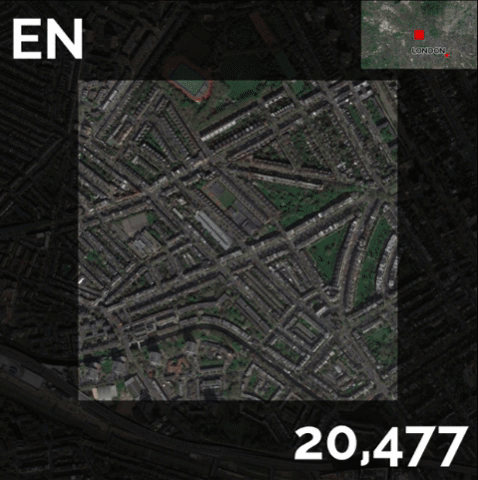This list tops out at 53,119 residents/km² in Barcelona's L’Hospitalet de Llobegrat neighborhood which is the wide open spaces compared to parts of Hong Kong or Mumbai.
From CityLab:
Examine the densest areas in each country and you’ll find some striking trends: Many were built in the same era for the same reasons, but their current popularity is a far cry from where they began.

.....MUCH MORE
In the sprawl of a contemporary North American city, it can be tempting to envy urban Europe for its density. For the most part, historic European cities are far more densely populated—their streets, by comparison, appear to be hives of vibrant activity, with compact but handsome apartments that model healthy, sustainable metropolitan living. But look to the densest urban areas in each European country and you’ll see a more complex, ambivalent picture of how they came to be. And Northern Neukölln certainly isn’t alone. A striking number of its counterparts across the continent have followed the same path, starting as hastily built barracks for rural migrants of the Industrial Revolution and ending up today as places that top the lists of neighborhoods where middle-income urbanites might want to live.
Take, for example, Northern Neukölln, Berlin. Though it’s increasingly seen as a desirable place to live today, for much of its existence this dense quarter was considered a social and aesthetic menace, known for overcrowding, dinginess and a generally poor quality of life. Through the twists and turns of history—and the increasing displacement of the lower-income tenants for which it was mainly built—its tightly packed streets and courtyards have come to be seen as a positive model of urban development, containing the single densest square kilometer in Germany.
In fact, it’s remarkable how many of the densest parts of European countries share similarities in layout, appearance, and origination. That’s all brought to light through a series of fascinating map images collected by Alasdair Rae, professorial fellow at Sheffield University’s Department of Urban Studies and Planning. The images also make clear why 100 years ago—when these areas were inhabited at even higher capacities than today—architects and planners were so keen to find more spacious, less concentrated models for how to lay out a city.
***Before going further, it pays to pin down exactly what areas we’re talking about. Below is a ranking of the most densely populated square kilometers in 30 European countries. This, to be clear, is a list of the densest area in each country, rather than a simple list of the densest areas in Europe, based on 2011 population data....
The Dharavi slums in Mumbai are generally guessed at being the most densely populated place on earth at 300,000 residents/km²while Kowloon's Mong Kok is the Guinness Book record holder at 130,000/km².
Some of the favelas in Rio de Janeiro and parts of Nairobi are also pretty packed.
Ditto for Dhaka.